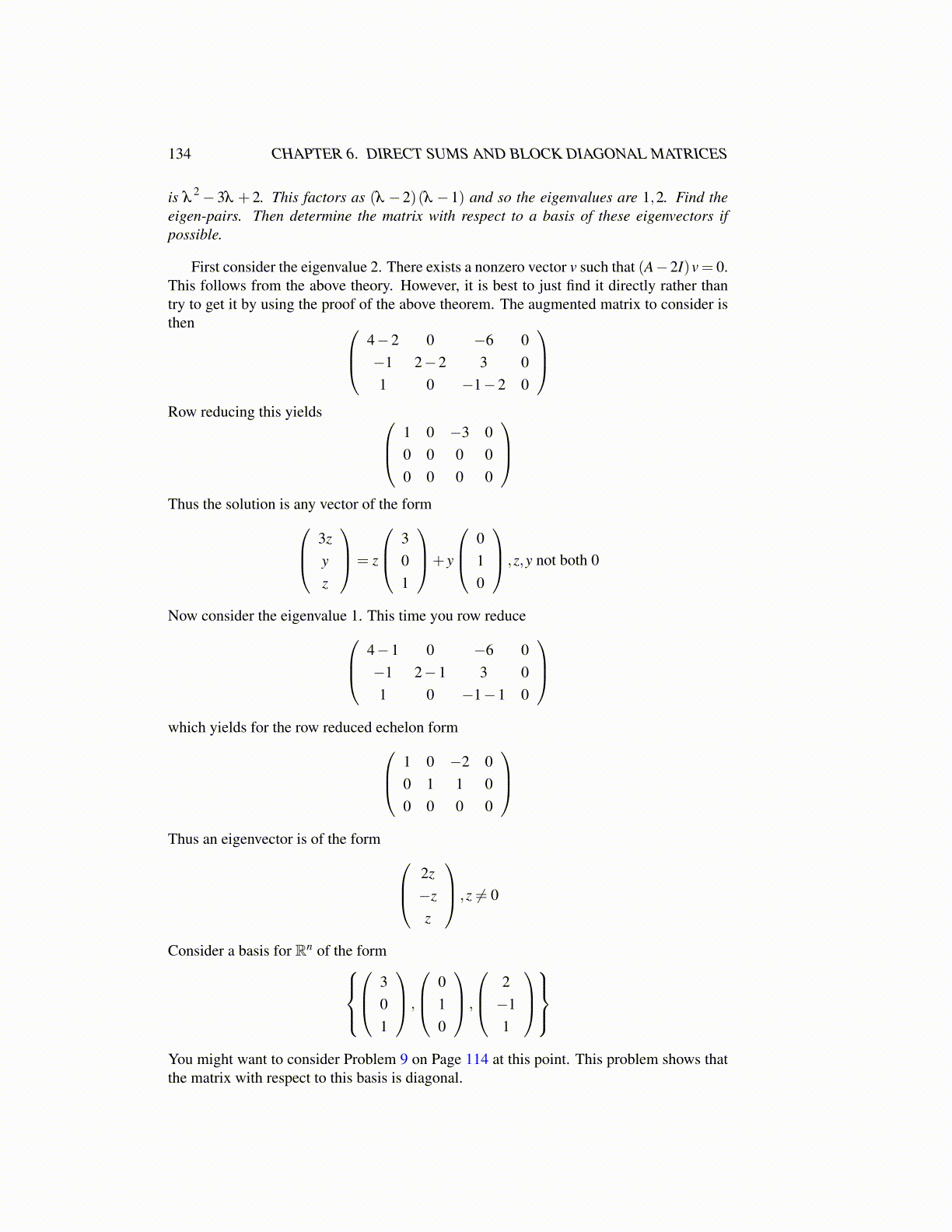
134 CHAPTER 6. DIRECT SUMS AND BLOCK DIAGONAL MATRICES
is λ2− 3λ + 2. This factors as (λ −2)(λ −1) and so the eigenvalues are 1,2. Find the
eigen-pairs. Then determine the matrix with respect to a basis of these eigenvectors ifpossible.
First consider the eigenvalue 2. There exists a nonzero vector v such that (A−2I)v = 0.This follows from the above theory. However, it is best to just find it directly rather thantry to get it by using the proof of the above theorem. The augmented matrix to consider isthen 4−2 0 −6 0
−1 2−2 3 01 0 −1−2 0
Row reducing this yields 1 0 −3 0
0 0 0 00 0 0 0
Thus the solution is any vector of the form 3z
yz
= z
301
+ y
010
,z,y not both 0
Now consider the eigenvalue 1. This time you row reduce 4−1 0 −6 0−1 2−1 3 01 0 −1−1 0
which yields for the row reduced echelon form 1 0 −2 0
0 1 1 00 0 0 0
Thus an eigenvector is of the form 2z
−zz
,z ̸= 0
Consider a basis for Rn of the form 3
01
,
010
,
2−11
You might want to consider Problem 9 on Page 114 at this point. This problem shows thatthe matrix with respect to this basis is diagonal.